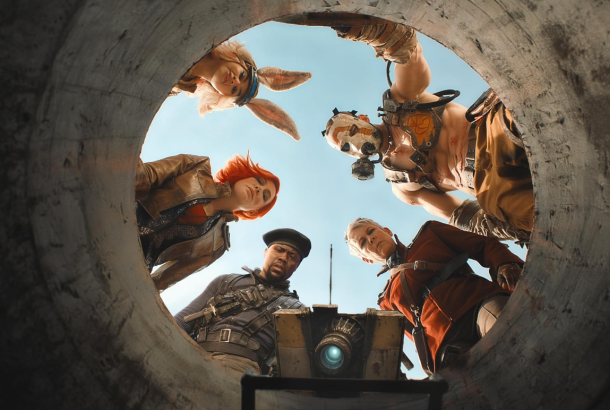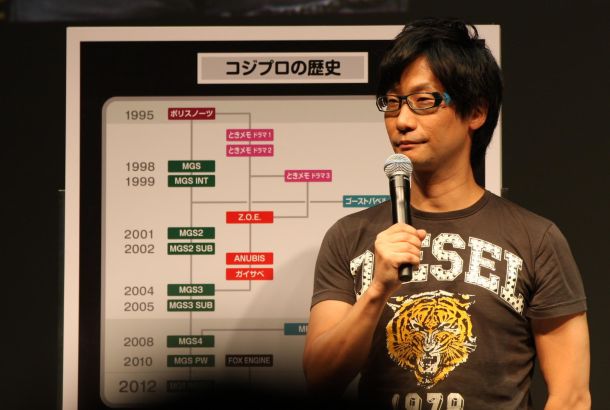Leaving the Vault
By Matthew Cole
Is there a more awe-inspiring moment in gaming than the Lone Wanderer emerging into the Capital Wasteland for the first time? It is hard to think of anything that can match the magnitude of that initial encounter with the irradiated ruins of Washington, D.C.; the way the light blinds the player after their imprisonment in the claustrophobic tin confines of Vault 101, and the way the dead expanse then rolls into focus, revealing miles of sun-scorched earth, rock, and broken road. These first 10 seconds or so bookmark the beginning of an unparalleled escape into the impossible, the uninhabitable, and for me they constitute a critical interval during which the player is not simply doing, but being.
It is easy to slip into superlative soup when writing about the transcendent function of games, and frankly it is embarrassing how often reviewers resort to overstatement in an effort to convey their escapist experiences. Fallout 3, however, offers a legitimate excuse for me to get worked up over that magical power unique to the medium.
When I talk about Fallout’s ability to make players ‘be’ rather than ‘do’, I’m alluding to the lens that we, as players, are forced to view games through. In almost every game ever made, we are placed in a world and tasked with an objective. To help us make sense of that world, the developer superimposes waypoints onto it, litters it with shiny objects, or designs it in such a way as to funnel us in a certain direction. To some degree we ignore our physical surroundings in the world; we fail to see impertinent visual details and stylistic flourishes because they do not facilitate our progression toward an end point. Instead, we are positioned purely in opposition to our environment, which transforms it into something that should not be observed, but conquered. In other words, our gaming eye is trained to reduce everything we see into interactive scaffolding, thereby blotting out the tireless work of a hundred programmers in the process. We would only notice these ‘extra’ visual details in their absence.
Fallout 3 is able to foreground these visual details by generating a moment of wonder. In the vault departure sequence described above, the piercing rays from the sun remind the player of the significance of the act they are undertaking; they are leaving their sheltered life behind them and are about to see the apocalyptic world for the first time. Then there is the actual visual impact of the landscape itself—its charred trees, distant towers and watercolour sky. After a fanfare underscores the momentousness of the occasion, everything becomes strikingly still, strikingly serene. The whistle of the wind accents the calm, imbuing the wasteland with a timeless quality.
Having been overwhelmed by the beauty of this image, the player then has to make sense of themselves in relation to their environment: “can I really travel to that faraway hill?” and “can I really scale that tower?” The reason they have difficulty coming to terms with their environment is that they are not given any obvious reference points—it is not clear which objects in the immediate vicinity might be valuable to them, and there is no obvious path for them to follow. The player will then turn around and face another uncertainty; behind the overhanging rock face that enshrouds the vault and obscures the player’s view beyond, it is not clear whether an equally epic mass of land awaits them on the other side. Taken together, these factors suspend the gaming impulse to ‘do’, and foster conditions conducive to the player becoming part of the environment.
Once I had left the vault on my first playthrough it was only a couple of minutes before I came across an Eyebot, a spherical robot that glides across the wasteland five feet above ground level whilst blaring out the propaganda of a surviving human faction. I heard the Eyebot before I saw it. It was crackling out some sort of patriotic melody, which grew louder and louder until I saw it appear from behind a rock and float past me. I thought it would react to my presence in some way, but it just kept bobbing along on its aimless path, the broadcast diminishing in volume as it disappeared from view again. It made me realise the world was indifferent to my existence; I could easily have missed this occurrence and yet, whether I had followed the robot on its journey or not, the wasteland did not really care. The world would go on without me. In fact, it had been going on without me for all those years I was locked up inside Vault 101.
In the same way that Hyrule continues to exist as a place even when I am not playing Ocarina of Time, the Capital Wasteland continues to hum and crackle away in my daydreams. The former does so by creating a fairytale-like world that never sleeps—if you were to enter the windmill of Kakariko village this very instant, you would be certain of seeing Guru-Guru, the creepy bearded character, playing Song of Storms with a mawkish grin on his face.
Fallout 3 also achieves this effect by going about its business irrespective of your quest, the only difference being that, in a post-nuclear setting, there are no fairy tales.







